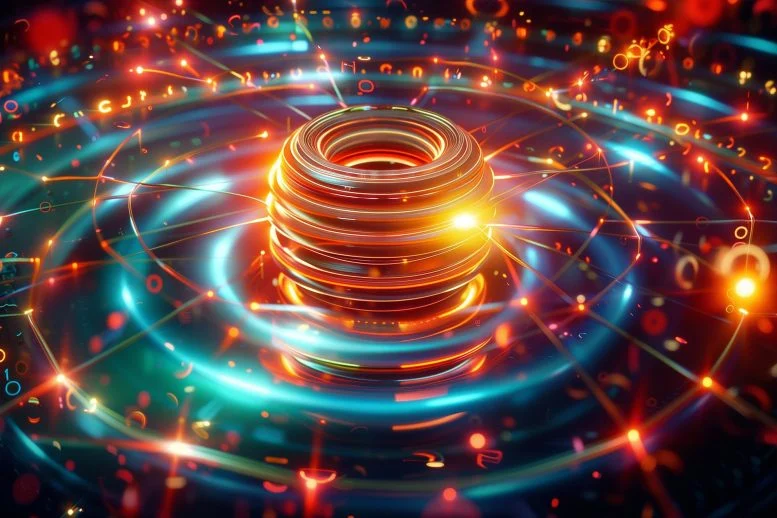
By University of Nottingham December 19, 2024
Collected at: https://scitechdaily.com/new-type-of-magnetism-discovered-that-could-make-electronics-1000x-faster/
Altermagnetism, a newly imaged class of magnetism, offers potential for the development of faster and more efficient magnetic memory devices, increasing operation speeds by up to a thousand times.
Researchers from the University of Nottingham have demonstrated that this third class of magnetism, combining properties of ferromagnetism and antiferromagnetism, could revolutionize computer memory and reduce environmental impact by decreasing reliance on rare elements.
Altermagnetism’s Unique Properties
A groundbreaking study has imaged a newly discovered type of magnetism called altermagnetism for the first time. This discovery could pave the way for developing advanced magnetic memory devices capable of operating up to a thousand times faster than current technologies.
Altermagnetism is a unique magnetic order where tiny magnetic building blocks align in opposite (antiparallel) directions, similar to antiferromagnetism. However, unlike traditional antiferromagnetic materials, the crystal structures hosting these magnetic moments are rotated relative to one another, creating a distinct magnetic pattern.
Researchers from the University of Nottingham’s School of Physics and Astronomy have confirmed the existence of this third class of magnetism and demonstrated its control within microscopic devices. Their findings, published on December 11 in Nature, mark a significant step toward practical applications in next-generation technology.

Research Findings and Potential Impacts
Professor Peter Wadley, who led the study, explains: “Altermagnets consist of magnetic moments that point antiparallel to their neighbors. However, each part of the crystal hosting these tiny moments is rotated with respect to its neighbors. This is like antiferromagnetism with a twist! But this subtle difference has huge ramifications.”
Magnetic materials are used in the majority of long-term computer memory and the latest generation of microelectronic devices. This is not only a massive and vital industry but also a significant source of global carbon emissions. Replacing the key components with altermagnetic materials would lead to huge increases in speed and efficiency while having the potential to massively reduce our dependency on rare and toxic heavy elements needed for conventional ferromagnetic technology.
Altermagnets combine the favorable properties of ferromagnets and antiferromagnets into a single material. They have the potential to lead to a thousand-fold increase in speed of microelectronic components and digital memory while being more robust and energy efficient.
Experimental Study and Future Prospects
Senior Research Fellow, Oliver Amin led the experiment and is a co-author on the study. He said: “Our experimental work has provided a bridge between theoretical concepts and real-life realization, which hopefully illuminates a path to developing altermagnetic materials for practical applications.”
The new experimental study was carried out at the MAX IV international facility in Sweden. The facility, which looks like a giant metal doughnut, is an electron accelerator, called a synchrotron, that produces X-rays.
X-rays are shone onto the magnetic material and the electrons given off from the surface are detected using a special microscope. This allows an image to be produced of the magnetism in the material with resolution of small features down to the nanoscale.
PhD student, Alfred Dal Din, has been exploring altermagnets for the last two years. This is yet another breakthrough that he has seen during his project. He comments: “To be amongst the first to see the effect and properties of this promising new class of magnetic materials during my PhD has been an immensely rewarding and challenging privilege.”
Reference: “Nanoscale imaging and control of altermagnetism in MnTe” by O. J. Amin, A. Dal Din, E. Golias, Y. Niu, A. Zakharov, S. C. Fromage, C. J. B. Fields, S. L. Heywood, R. B. Cousins, F. Maccherozzi, J. Krempaský, J. H. Dil, D. Kriegner, B. Kiraly, R. P. Campion, A. W. Rushforth, K. W. Edmonds, S. S. Dhesi, L. Šmejkal, T. Jungwirth and P. Wadley, 11 December 2024, Nature.
DOI: 10.1038/s41586-024-08234-x

Leave a Reply